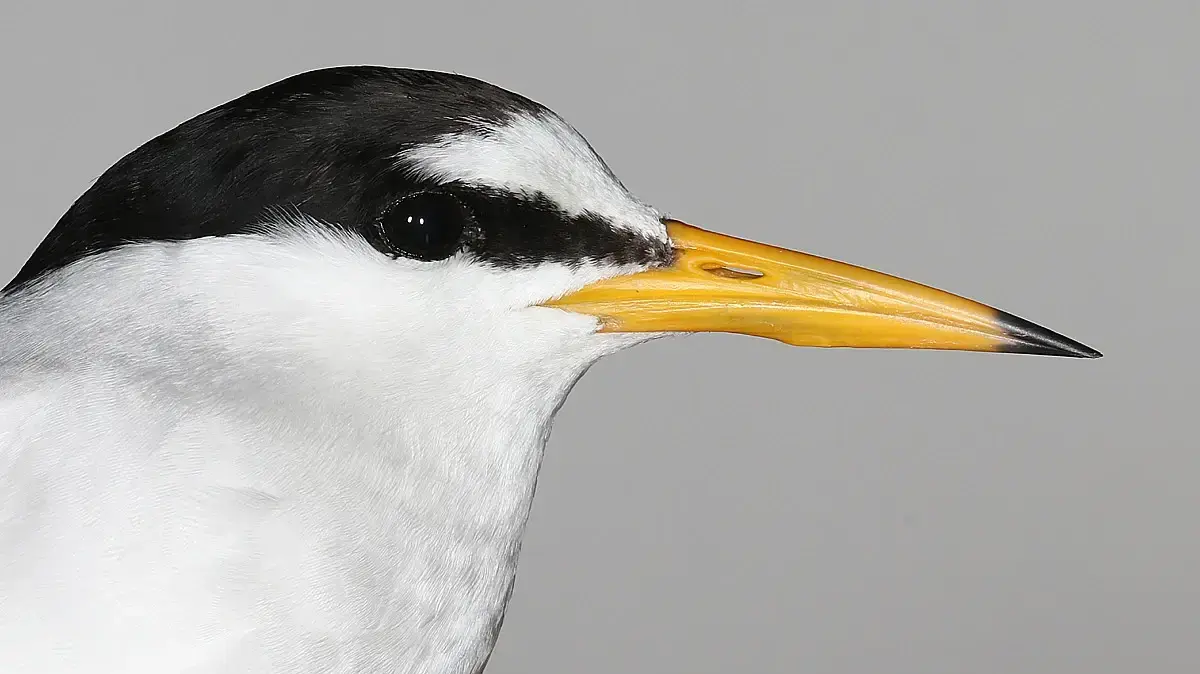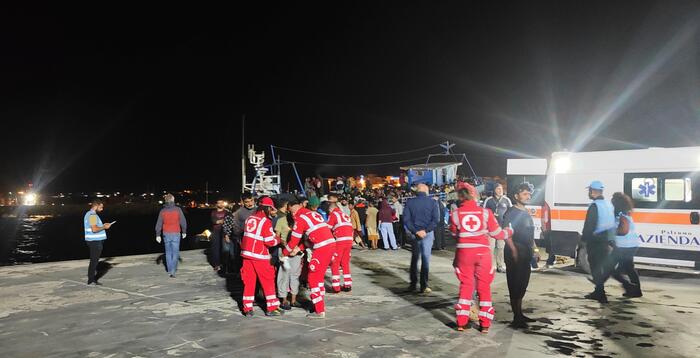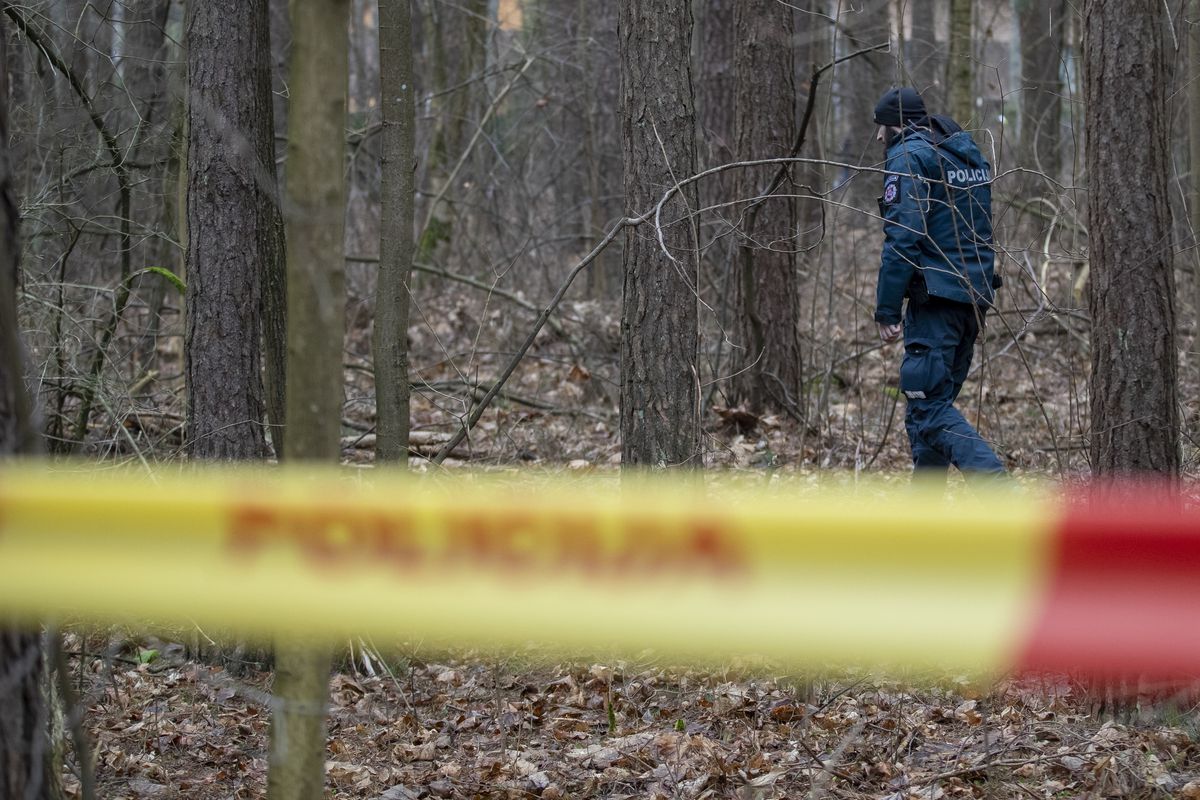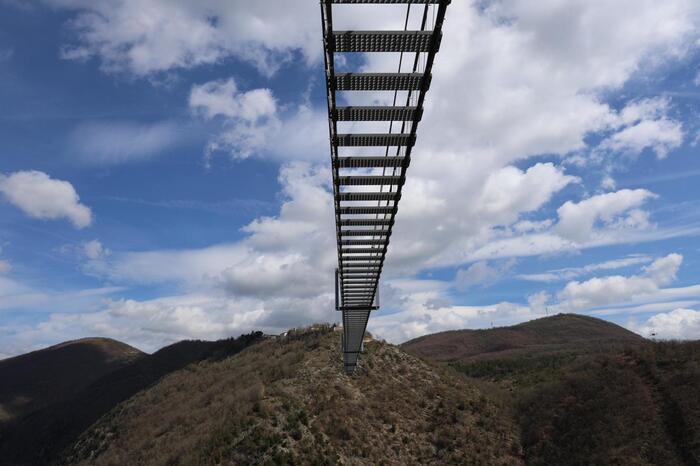1
León and Dani, 12, are in fifth and sixth grade, respectively.
As soon as they leave school they go to the landfills to collect scrap metal, load it into a wheelbarrow and resell it.
The money is given to their parents, who also do the same activity.
They live in Shuto Orizari, better known as Shukta ("garbage"), on the outskirts of Skopje (the capital of the country).
80% of the city's population is Roma.
In 1996, the Government officially recognized the first Roma municipality in the world, in which residents are politically and economically organized, and the only one in Europe in which Romany is the official language.
Near the main street there are real waste hills on which the huts of part of the population have been built.
Trucks are seen unloading waste throughout the day.
In Shukta and Skopje, many collect iron and plastic from landfills.
Shukta is one of the poorest municipalities in this country, one of the lowest income in Europe.
10% of its inhabitants lack documentation, and only 11% of the Roma population has finished high school, compared to 60% of the national population (two million).
2Demonstration by former workers of the old OHIS waste plant in the center of the capital to demand compensation for the serious damage to their health.
The Republic of North Macedonia, located in the center of the Balkan Peninsula in southern Europe, and independent from Yugoslavia in 1991, has more than two million inhabitants.
It is one of the countries most affected by air pollution in the world, and in it the rate of premature deaths exceeds that of most European countries, according to the European Environment Agency.
3On windy days, plastics from landfills fly off and invade nearby fields.
According to air pollution data from the European Environment Agency, Skopje, Bitola and Tetovo are among the most polluted cities in Europe.
In Bitola, air pollution can be mainly attributed to burning garbage in the open air and emissions from the state-owned coal-fired power plant Combinado de Minería y Energía, located in the municipality of Novaci, near the border with Greece. .
The plant supplies approximately 70% of North Macedonia's electricity by burning lignite, a highly polluting variety of low-quality coal.
When the wind blows strongly, the fly ash disperses through the air and becomes a threat to the health of the plant workers and the local population.
4
Lufti Shaziu, 64, on the sofa in the living room of his home in the town of Studenichani, outside Skopje, where he was born and raised.
Shaziu worked 36 years in the OHIS factory in the capital.
The majority state-owned company had five factories for cleaning products, insecticides, pesticides and cosmetics that were sold throughout the Balkans.
Shaziu left in the morning and came home in the late afternoon.
He worked with dangerous chemical agents without knowing it and without the proper preparation or means.
He did not know the level of toxicity in the environment, but he remembers that a lot of dust came out of the chimneys and the dead birds on the roofs.
Over the years, 70-80% of their peers have suffered from serious health problems, and many have died.
Currently, the OHIS plant is abandoned.
Large amounts of waste remain from it and contaminated landfills in the open air.
According to the NGO Ekosvest, the factory had facilities to produce hydrochloric acid using mercury electrodes.
During the process, mercury was released into the air that was deposited near the factory and contaminated the area.
The OHIS complex tops the list of the 16 most critical environmental points in North Macedonia compiled by Trajce Stafilov of the Skopje Institute of Chemistry.
5An employee of the Tetovo City Council burns garbage in the Muslim cemetery near the city center.
Burning it is a very common practice.
The World Health Organization (WHO) considers air pollution a "public health emergency" and notes that each year it causes 8.8 million premature deaths, which makes it a worse deadly agent than tobacco use. .
6Truck tires burned for fuel in an open-air lime kiln in the hills around the town of Kosturino, near the town of Strumica.
In Kosturino there is a tradition, passed down from generation to generation, of producing highly resistant lime for liming.
No one can say exactly how many ovens are in the area.
According to local workers, there are several types and of different sizes.
The brick ones last more than 10 years, but the stone ones have to be repaired annually.
7
On weekends, Skopjeans often escape the pollution of the capital by going to Mount Vodno.
The mountain is a popular destination for hiking and day trips, known locally as the "green lungs" of the city for its clean, cold air.
Due to climate change, the winter of 2020 was one of the warmest in recent years.
According to a report by the United Nations Development Program (UNDP), air pollution continues to take its toll on the health of the people of Skopje, and in particular the most vulnerable population groups, such as people with chronic diseases, the children and the elderly.
45% of the city's homes are heated with firewood.
Burning this material is one of the most polluting forms of heating, but poorer families burn even more dangerous materials that can cause respiratory illnesses.
The Government of North Macedonia has decided to install a gas pipeline to bring gas to houses, modernize the domestic heating system and reduce pollution.
The route of the Skopje-Tetovo-Gostivar gas pipeline runs through the Vodno forest park.
Environmentalists are against the passage of the conduit through the mountain, warning that it would cause irreversible damage to its valuable ecosystem.
8A burned hill around the town of Prilep.
There, the only way to heat the houses is with firewood.
Buying it from official sellers costs very expensive and, in addition, it takes a long time to get it.
According to city dwellers, around 60% of the population buys firewood on the black market.
The so-called "wood thieves" are both Macedonian and Gypsy ethnic, and the hills surrounding the city have been divided.
They are dangerous criminals and they are armed.
Sometimes there are shootings with the police.
The firewood they sell on the illegal market is very cheap, but also very polluting because it is still wet and has not been properly treated.
According to environmentalists, the hill was set on fire during a revenge between illegal "wood thieves".
9Naza, 51, has nine children and makes a living begging in the streets.
His 18-year-old daughter Sanie has a baby named Naza after her grandmother.
In North Macedonia, poor people often burn low-quality firewood, fabrics, plastics and garbage to heat their houses in winter due to lack of stable gas supply and electricity is very expensive.
According to the EU Research Result website, this outdated heating system is one of the main causes of air pollution in the country.
In Tetovo, the concentration of PM 2.5 particles exceeds 8.1 times the safety threshold, which the WHO recommendations place at less than 19 micrograms per cubic meter of air (µg / m3).
According to the NGO Eco Guerrilla, the concentration of harmful PM 10 particles has decreased by 41% since the Jugohrom factory, near the town of Jegunovce, closed in 2017. Environmentalists report that garbage from abroad was burned in the factory, just as than in many others in the country.
10
A tennis court in a gym in the center of Skopje.
The Macedonian government and the popular mobile air quality monitoring app MyAir, created by Gorjan Jovanovski, a North Macedonian program engineer, monitor air pollution detection stations.
Based on the data collected, they advise citizens to stay home, do not open the windows and always wear a mask.
Many people are afraid and stay home without going out.
Lack of social contact and isolation cause anxiety and depression.
As reported in an article published in 'The Guardian, in 2019, with the results of a systematic review of data from around the world, and confirmed by Macedonian psychologist Ivana Hadjivanova, people living in polluted atmospheres suffer more from depression and suicide.
eleven
A farmer harvests cauliflowers in his field, near the Combined coal-fired power plant of Mining and Energy.
He says that the population that lives near the plant has never had health problems, because the air is not polluted.
The pollution comes from factories in neighboring Greece.
For fear of revenge for having spoken with a foreign journalist, the man prefers to remain anonymous.
According to Antonello Pisani, climatologist at the Italian National Research Council, living in a highly polluted area favors the appearance of chronic diseases (asthma and other respiratory or cardiovascular ailments) that increase the vulnerability of some people to the effects of the coronavirus.
12
Tires prepared for burning in the hills surrounding the village of Kosturino, near the town of Strumica.
Local workers say they prefer to burn the wheels because they are so cheap.
For the load of a truck they pay 100 euros.
To obtain 15 tons of product, they burn between 500 and 700 pieces.
In stores you can buy five kilos of lime for 2.5 euros.
The impact of this traditional lime production procedure is devastating for the environment, as it causes irreversible damage to the ecosystem.
According to environmentalists, air quality monitoring stations do not reach the entire country, and in many cases they do not work well.
Consequently, the measurements are likely to be below the true figures.
There are no extensive and detailed studies on the major polluters of these valleys.
13View of the construction of a skyscraper by a Turkish company.
The apartments measure between 60 and 80 square meters, and are sold for 1,300 euros per square meter.
Many have yet to be awarded.
According to local activists, the construction of skyscrapers prevents air circulation and retains pollution.
14 Control room of the Usje cement factory, near the city center.
Environmental groups often gather in front of the factory gate and accuse manufacturers of burning different kinds of waste as fuel.
The factory manager denies the allegations.
15Plastic collection center where citizens, especially the Roma community, sell the plastic they collect on the streets of the city.
In Europe, poor air quality alone constitutes the greatest environmental threat to health.
North Macedonia's air pollution can be attributed to emissions from former Yugoslavian-era industries, poorly controlled vehicle exhaust, outdoor burning of garbage, and domestic heating.
16 Ibraim, 70, burns plastic waste to warm himself in the shack where he and his wife live.
Ibraim makes a living begging in the city.
According to the EU Research Result website, every year 2,574 people die prematurely as a direct consequence of polluted air.
The WHO Environmental Pollution Database ranks the city of Skopje, with a population of around 600,000, as the capital with the poorest quality air in Europe.
17Night view of the Zalajazera complex, a large industrial estate where journalists are not allowed to enter.
According to ecologists, inside there are highly polluting facilities.
18Tires prepared to be burned in the hills surrounding the town of Kosturino, near the town of Strumica.
In recent years, several cities in the country repeat on the list of the most polluted in the continent, with average concentrations of both PM 10 and PM 2.5 (particles with diameters equal to or less than 10 micrometers and 2.5 micrometers, respectively). ) that exceed security levels up to 20 times.
19The route of the Skopje-Tetovo-Gostivar gas pipeline runs through the Vodno Forest Park.
Environmentalists are against the passage of the conduit through the mountain, warning that it would cause irreversible damage to its valuable ecosystem.
20A group of Skopje residents return home in the afternoon with the last cable car ride.
On weekends, the inhabitants of the capital often escape the pollution of the city by leaving Mount Vodno, a popular destination for hiking and day trips, known locally as the "green lungs" of the city for its clean and cold air.
Due to climate change, the winter of 2020 was one of the warmest in recent years.
21Skeletons of tires burned in kilns, in front of trees blackened by pollution.
A recent report on the results of a pilot test carried out by the European Union estimates that a third of the deaths in the Skopje region are attributable to airborne particulate matter.
In addition to mortality, its presence is related to chronic diseases, such as cardiovascular and respiratory diseases, as well as cancer.
22Kimel, 63, in her room.
He lives by begging in the city.
In winter, the government advises staying indoors and avoiding outdoor activities.
Aside from health problems, air pollution can have psychological effects and lead to depression.
Low winter temperatures exacerbate the situation, due to emissions from the use of fossil fuels to heat buildings.
23 Marble quarry in Prilep.
Prilep marble is considered of high quality, just like Italian Carrara marble.
Quarries cut down mountains and cut down trees.
Marmettola is a material product of marble processing highly polluting for water resources.
24
The Combined Mining and Energy coal-fired power plant supplies approximately 70% of North Macedonia's electricity by burning lignite, a highly polluting variety of low-quality coal.
When the wind blows strongly, the fly ash disperses through the air and becomes a threat to the health of the plant workers and the local population.
The local Makfax news agency reported that Petre Shilegov, the mayor of Skopje, had confirmed that some 60,000 households were consuming poor-quality wood and charcoal for heating.
The population even uses textiles, plastics and garbage to heat houses due to the lack of stable gas supply and high electricity prices.
25Abas, 36, at a landfill in Shukta.
Before, he lived in Italy, where he worked as a butcher.
Low average income (the minimum wage is 260 euros) and energy poverty are just two of the problems responsible for Skopje's high pollution.
Another cause is the geographic location of the city in a valley surrounded by mountains that prevent the polluted air from dispersing.
26The situation is further complicated by thermal inversion, a natural phenomenon that causes hot air to stay on top of cold, contributing to the greenhouse effect.
In the image, the playground of the Mother Teresa hospital is empty in winter.
The hospital is the most important in the country.
The small territory of Europe that is drowning
2021-03-16T07:38:02.266Z

The Republic of North Macedonia is one of the countries most affected by air pollution in the world, where the rate of premature deaths exceeds that of most European countries. A tour of its cities and fields reveals some of the reasons








